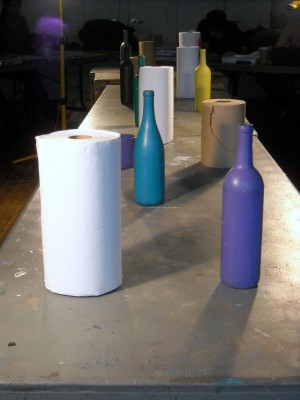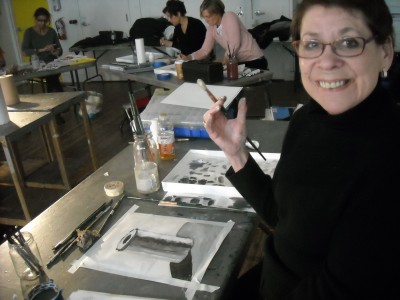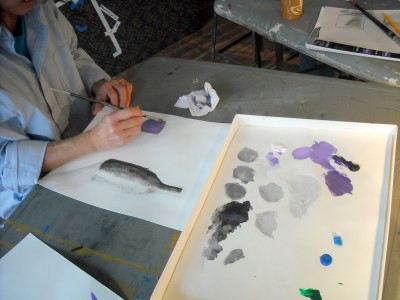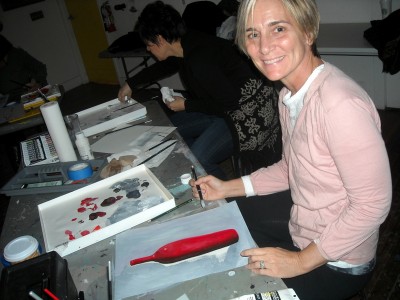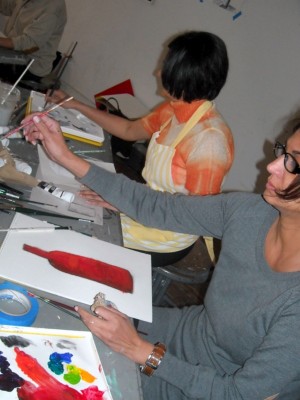Some people chose to paint the paper towels, others the colored bottles. In each case it’s necessary to focus on the creation of shadow values-those on the subject, called “form shadows”, and those “cast” or thrown onto the resting surface by the subject- in order to bring out the illusion of dimension. Lighting the subject with focused artificial lights creates clear shadow value shapes to work from.
Below you see students developing the bottle shape with color. The first layer of red can be intensified by adding another layer of color. The form shadow shows thought the first, somewhat transparant color layer, and can be used as a guide to developing the form shadow further if you want to use thicker paint thoughout the artwork.
Highlights, the smallest, brightest areas of the painting, and accents, the smaller, darkest elements are among the last touches added to the painting.
Above, this student fills in the negative space around the subject matter, and adds lighlights.
Paintings are created in layers, starting from generalized, thin layers, and building up toward the images we see in galleries, which represents the final layers. Highlights, detail, and accents- the darker areas, appear in the topmost areas. My book, “Painting for the Absolute and Utter and Utter Beginner” will explainin detail how you can do this.

